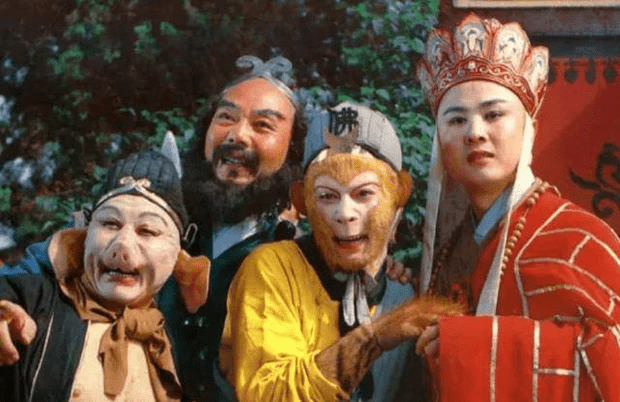Journey to the West, authored by Wu Cheng’en, is renowned as one of the great literary classics of China. This literary masterpiece tells the story of the pilgrimage to the West to retrieve Buddhist scriptures, accompanied by four characters: Sun Wukong, Zhu Bajie, Sha Wujing, and Tang Seng.
According to the legend of Journey to the West, Tang Seng (or Tripitaka) has a previous incarnation as the heavenly being Jin Tianzhu, the disciple of the Buddha. Due to an incident during a meditation session and accidentally stepping on a sacred rice grain, Jin Tianzhu was banished to the mortal realm for ten lifetimes and had to endure 81 tribulations before being allowed to return to the Heavenly Mountain.

In the first nine lifetimes, Jin Tianzhu traveled to obtain scriptures through the Liusha River. By the tenth lifetime, Jin Tianzhu reincarnated as Tang Seng, the monk of the Tang dynasty, under the name Huyền Trang. He was raised and trained in the Kim Sơn monastery. His journey began when Emperor Taizong of the Tang dynasty, concerned about the fate of his people, sought to retrieve the scriptures.
At that time, in Chang’an city, Emperor Taizong bestowed upon Huyền Trang a robe made of special fabric and a ceremonial staff. At the same time, he expressed that the journey would take 18,000 li to Linh Sơn in the West, where the great Buddhist texts were said to have originated.
After hearing the emperor’s decree, Tang Seng was determined to journey to the West and was given the name Tam Tạng, meaning ‘three treasures,’ along with a golden bowl, a white horse, and two disciples.
However, during his departure from the capital, two of his disciples were captured by demons. Tang Seng encountered a monk named Sun Wukong, who helped him before they first met Zhu Bajie. From there, he continued to face 81 tribulations alongside his four companions. Ultimately, Tang Seng successfully retrieved the scriptures, achieving enlightenment and receiving the title of Chiến Đàn Công Đức Phật or Vô Lượng Công Đức Phật.
Journey to the West contains an interesting detail: every time Tang Seng entered a new country, he had to request permission through an official document, known as the thông quan văn điệp. This document served as an official permit issued by the emperor for the journey. Whenever Tang Seng traveled to a foreign land, he would often utter the phrase: “I, Huyền Trang, have come to receive the scriptures from the West, through the official route of the Great Emperor, to fulfill my purpose.“
What is the purpose of the official document?
The key point is that after seeing the seal of Emperor Taizong, the ruler of all nations, Tang Seng was required to present the official document to the officials of each country he passed through. This document had significant implications. After Tang Seng retrieved the scriptures, he needed to convey the results of his journey to the emperor.
The official document serves a dual purpose: it records the process of Tang Seng’s journey to retrieve the scriptures and acts as proof of the completion of his mission in accordance with the emperor’s wishes. Thus, the official document appears consistently throughout the entirety of Journey to the West.
Sources: Sohu, 163, Baidu























